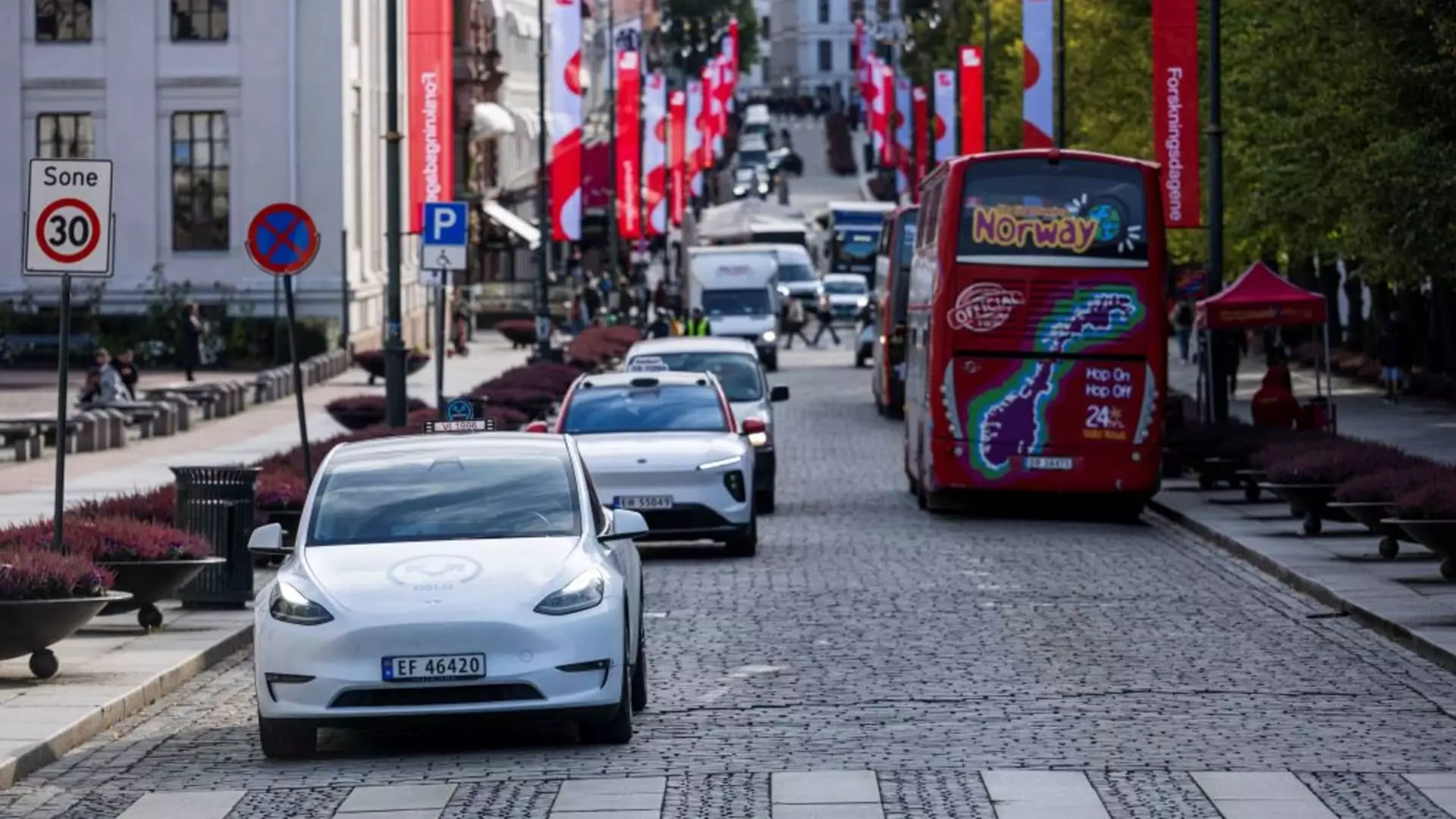In a tumultuous market environment, Tesla shares experienced a notable decline, dropping approximately 5% following President Donald Trump’s announcement regarding extensive tariffs on imports from Canada, Mexico, and China. This downward trend highlights the broader implications of international trade policies on the electric vehicle (EV) sector, particularly for a company like Tesla, which sources a significant portion of its components from China. Tesla is unique among major automakers, as it has made concerted efforts to localize its supply chain across various global markets, operating factories not only in the U.S. but also in Berlin and Shanghai. However, the news of tariffs poses a substantial threat to Tesla’s operational efficiencies, potentially eroding its profit margins as Chief Financial Officer Vaibhav Taneja acknowledged during the company’s recent earnings call.
Compounding Tesla’s challenges, the company has reported a significant drop in vehicle registrations across Europe, particularly in key markets such as France, Sweden, and Norway. In January, registrations in France plummeted by an alarming 63% compared to the same month the previous year, as per data from Plateforme Automobile (PFA). This decline stands in stark contrast to the more moderate reductions experienced across the broader automotive market, suggesting that Tesla is facing unique competitive pressures. Similarly, in Sweden and Norway, Tesla’s sales fell by 44% and 38%, respectively. These figures indicate a disturbing trend that may signal consumers’ shifting preferences or growing competition from other EV manufacturers.
In light of these adversities, Tesla has proactively responded by cutting lease prices for its base Model 3 sedan and the unpainted steel version of the Cybertruck. This strategic decision reflects a recognition of the urgent need to attract buyers in a highly competitive landscape while coping with declining registrations and a potential profit squeeze due to tariffs. The adjustments in pricing strategies suggest that Tesla is keenly aware of the market’s dynamics and is attempting to bolster its sales figures in a period marked by uncertainty.
Market analysts and independent researchers have also weighed in on Tesla’s prospects. A notable figure in this regard, who operates under the pseudonym “Troy Teslike” on Patreon, has projected a meager sales forecast for the Cybertruck, estimating that Tesla may sell approximately 21,000 units in 2025. Highlighting the rapid deterioration of the order backlog, he notes that by the end of 2024, Tesla had around 10,600 unsold Cybertrucks, attributing the situation to a combination of excessive production and waning demand. The drastic decline in pre-orders – with the backlog vanishing completely on November 24, 2024 – raises concerns about the evolving consumer sentiment surrounding the Cybertruck, indicating a potential disconnect between production capabilities and market demand.
Tesla’s situation is also complicated by the political connections of its CEO, Elon Musk, who was an ardent supporter of Trump’s administration. Musk’s financial contributions to Republican candidates, totaling $290 million, and his recent endorsement of Germany’s far-right Alternative for Germany (AfD) party may further complicate the company’s public image and brand value. Given that consulting firm Brand Finance reported a staggering 26% drop in Tesla’s brand value in 2024, it is critical for the company to navigate these political affiliations with care. The intertwining of business and politics can influence consumer perception, particularly in an increasingly polarized environment.
Tesla is grappling with a multitude of challenges ranging from mandatory tariffs and declining vehicle registrations to shifting consumer demand for its newer models like the Cybertruck. The ability of Tesla to maneuver through these obstacles will be paramount to its sustained growth in a fiercely competitive EV market. As the company recalibrates its strategies and addresses emerging concerns, the broader implications of these challenges also underscore the unpredictability inherent in the automotive industry, particularly as it evolves in response to external factors.

